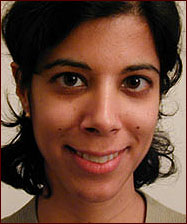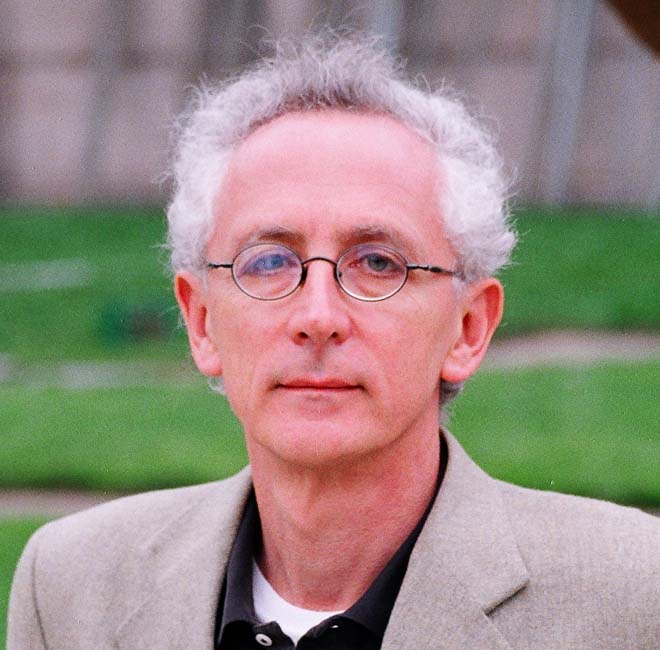
By Nina Mehta
Emanuel Derman was one of the early rocket scientists to make the shift to finance. He received his Ph.D. in theoretical particle physics from Columbia University in 1973 and taught at a few universities, before landing at AT&T Bell Laboratories. From 1985 to 2002, he worked at Goldman Sachs, with a brief interlude at Salomon Brothers. In the 1990s, he ran the Quantitative Strategies Group in Goldman’s equities division, and then served as head of Derivatives Analysis in firm-wide risk. With Fischer Black and Bill Toy, he co-developed the popular Black-Derman-Toy model for pricing bond options. He left Wall Street in mid-2002 to return to academic life, and is currently a professor and co-head of the financial engineering program at Columbia. He is also working on a memoir chronicling his life as a modeler.
FEN: You’ve been both a risk manager and a modeler at Goldman Sachs. Do those jobs represent different ways of thinking about risk and valuation?
Derman: Modeling is what I’ve done the longest and what I’m most comfortable with. In principle, risk management is very interesting, but in practice I must say I didn’t enjoy it as much because it wasn’t quite as precise and it had more of a bureaucratic heaviness. Neither modeling nor risk management is strict science, but modeling is much more scientific than risk management is. In modeling you make a toy-like version of how the market behaves, or how a particular product in the market behaves. You have to be as precise as possible because someone is going to buy or sell something on the basis of the model. Risk management at the enterprise level–not just at the desk level–is equally important, but it’s a more wishy-washy activity. You try to capture the general response of all desks and divisions and the whole firm, recursively, moving upwards, to big market moves and large, unexpected shocks. But you’re really just building dikes against massive catastrophes.
FEN: How did enterprise risk management change while you were at Goldman Sachs?
Derman: Enterprise risk management started six or eight years ago under Bob Litterman. It was focused on value-at-risk and was basically a giant variance-covariance matrix. Over the years, people extended the model from fixed income to equities to currencies to non-linear derivatives products like swaptions–the products got more and more exotic. The objective was to understand what the statistical risk of the whole firm was. But statistics aren’t everything. In a good way, Goldman Sachs was eclectically irreligious about what was the right way to look at risk. We didn’t just rely on VAR. Estimates of the probability of bad things happening are notoriously poor because crises don’t repeat themselves in exactly the same way. We relied on scenario analysis and stress-testing as well. There were limits on positions, for instance, in order to limit the loss that would occur under a repeat of the 1998 country-default scenario.

“We didn’t just rely on VAR. Estimates of the probability of bad things happening are notoriously poor because crises don’t repeat themselves in exactly the same way”.
FEN: When you were in firm-wide risk, what did you spend most of your time doing?
Derman: I was in charge of a group called Derivatives Analysis. At most firms, exotic illiquid products have the highest margin. There are weird sorts of swaptions where the coupon or the payment on the swaption might be a function of the yen-U.S. dollar rate or the Nikkei level. We were responsible for deciding whether these products were being marked correctly. Traders and front-office quants will tell you what an exotic trade is worth, but the firm’s books and records and the firm’s value as a public company and even the bonuses that people receive are all affected by how much profit traders make–and the profit depends on somebody’s mark via a model. There’s no way to look up the value of a unique hybrid product on Bloomberg.
FEN: So the initial valuation came from the trading desk and the models designed for traders?
Derman: Yes, although toward the end of my time in firm-wide risk management, we tried to get a look at these trades before they were done rather than after the fact. When I started we looked at them only when somebody in the controller’s office came along and said, “This desk did a weird trade. Can you take a look and see whether the price was right?” Actually, we did two different things in my group. First, we built our own independent models for exotic products and calibrated them, and then checked our answers against the desk’s model. Second, we ran simulations to figure out what would happen to positions if they were held to expiration and hedged. The profit that will be realized ultimately depends on how a trader hedges and how the market behaves over that time. Black-Scholes is based on hedging every millisecond while the market undergoes geometric Brownian motion. But a trader might hedge only once a day or once a week, so we put in real market movements with jumps and real trading strategies–and would then see what the realized P&L looked like after hedging the trade for four years.
FEN: How much of what you were doing was policing people in the front office vs. improving the models?
Derman: It was a mix. There was always a slight policing aspect, although it wasn’t played up. We were a little envious of the traders and trading quants because they had more fun, because they took first bash at the products. We were there to see if they did it right and if we agreed with them.
FEN: What do you think modelers and theoreticians misunderstand about traders?
Derman: There’s a massive language gap between modelers and traders, especially new modelers. Traders are pretty visceral and intuitive. If they’re good, they understand the dynamics of the model and they have a motion-oriented or scenario-oriented view of what will happen to a position if the market moves. Modelers, on the other hand, tend to think more about how to calculate the value and what the position is worth. Those two things are related, of course. The other thing is that traders have very little time. If you’re a front-office quant, it’s hard to get their time. If you’re in enterprise risk management, which is a more middle-office role, then it’s really hard to get their time. The truth is, in the end they view you as doing a secondary thing rather than a primary thing, unless it affects them in some regulatory way.

“There’s a massive language gap between modelers and traders, especially new modelers. Traders are pretty visceral and intuitive. If they’re good, they understand the dynamics of the model and they have a motion-oriented or scenario-oriented view of what will happen to a position if the market moves. Modelers, on the other hand, tend to think more about how to calculate the value and what the position is worth.”
FEN: What sorts of things did you worry about at night when you were at Goldman Sachs?
Derman: What concerned us greatly in derivatives risk management was the operational risk in using models. The models people use to value products are of necessity simpler than the products themselves. A convertible bond, for example, has equity risk and fixed-income risk, not to mention credit risk, and there’s a correlation between the two that must be specified. But people often ignore that and build a simple one-factor model that provides a rough price. One day three years down the road, however, the world might be different. Indeed, for convertibles it is different now compared to the early nineties–and convertibles are at least standard. But for any hybrid product that has a long life and is not too standard, it’s possible that one day no one will realize that the relevant proprietary model is inadequate in the new regime. We therefore tried to persuade the people who put new products into the trading system to think about their assumptions and then write a little note, such as, “This model is okay for now but we ignored currency volatility in calculating this position because it’s a 1% effect, so if currency volatilities rise in the future, there could be a problem.”
FEN: I’m surprised. The models don’t get a checkup every year to make sure the assumptions and premises are still operative?
Derman: They do. Models are always greater or lesser compromises. But these are very idiosyncratic products, so you have to re-look at all of your products–and not just the models–in light of current market conditions. People did that, but we were always worried that something would slip by.
FEN: Earlier in your tenure at Goldman Sachs, you worked on fixed-income models. Why was the Black-Derman-Toy model important, and what did it do that others didn’t?
Derman: Vasicek’s model was the original yield-curve model and contained the seeds of everything that came afterwards. The Black-Derman-Toy model was similar to Vasicek’s, since it was also essentially a yield-curve model, but because we were working with the bond options trading desk our focus was different. At the time, people used yield-curve models in a “forward”direction–they put in parameters and looked at the yield curve that came out of the models. Our idea was to take the yield curve and its volatility as given, and to make the model fit those. So it was an inverse or “backwards” problem. The Ho-Lee model was similar to ours. One reason our model was popular was that it was described in a way that made sense to people who were going to use it to trade bond options. The second reason was that we wrote it in an algorithmic language, not in the language of stochastic calculus or martingales.
FEN: You’ve seen the industry evolve over the years. What important ideas in risk management do you think have been overlooked?
Derman: What I’d like to see is more derivatives-style models in which the things you are interested in are all related to each other. In Merton’s model of the firm, for instance, you can look at a stock not as an independent asset but as an option on the hypothetical assets of the firm. If those assets fall in value below the firm’s debt, the stock will be worth zero. So the stock itself can be viewed as a derivative, as a call option on the assets of the firm whose strike price is the debt. The reason option theory is so successful and so widely used is because an option isn’t an independent security. It’s a tightly constrained product that’s forced to lie somewhere between a stock and a bond. Where the calibration comes in is that if you know the option price today, you can figure out what the market thinks the implied volatility is. You can then figure out how the option price will respond to all sorts of changes.
FEN: So Merton’s model establishes a relationship between the stock price and a firm’s assets and debt. How do you use that?
Derman: People use the Merton model in credit derivatives–for example, to relate the credit spread on a firm’s debt to the level of the firm’s equity. Everybody knew those things were related in some general way, but the model offered a way to relate them by making them both depend on the more fundamental assets of the firm and their volatility. Everybody knows that if a stock price goes down far enough, credit spreads will widen on the bonds because the company is more likely to go bankrupt. In the Merton model, if the assets of the firm are much greater than the debt, the stock price will be pretty stable. As the assets get closer to the debt, the company is more likely to default because the assets are more likely to “diffuse” into the default boundary. The dollar distance between the assets of the firm and its debt determines both the stock price and the credit spread.
FEN: Are most credit derivatives models based on this kind of analysis?
Derman: The widely used KMV model is a more pragmatic version of the Merton model but it has the same underlying philosophy. There are also other models based on the idea of derivatives.
FEN: How does this sort of innovation occur in finance? Does it usually revolve around a product or is it the result of someone sitting on a solitary rock somewhere thinking complicated thoughts?
Derman: I think really primary innovations like the Black-Scholes formula and Merton’s continuous-time finance are strokes of genius. They’re like great discoveries in physics or mathematics–where someone thinks long and hard about something and comes up with a formalism that revolutionizes the whole world. Those things are probably more easily achieved in academic life. Secondary but very useful advances are more often the result of interactions between practitioners and the people who make the models. Someone works with traders, discovers the limits of an old model or discovers that traders are doing clever and intuitive things that can’t be justified but that seem to be sensible–and then tries to explain them in a logical way, or tries to add a wrinkle to the model or extend it in some way. The Black-Derman-Toy model is an example of this.

“I think really primary innovations like the Black-Scholes formula and Merton’s continuous-time finance are strokes of genius. They’re like great discoveries in physics or mathematics–where someone thinks long and hard about something and comes up with a formalism that revolutionizes the whole world”.
FEN: Do you think the derivatives field is likely to see a real stroke of genius outside the Black-Scholes-Merton paradigm?
Derman: That would be great. Derivatives have had an incredible run. The history of quant employment on the Street is the history of Black-Scholes-Merton being used in wider and wider contexts. But from an intellectual point of view I think it’s sort of played out. There is still a lot of interesting and useful stuff to do, but credit derivatives and fixed-income modeling are just one more extension of the Black-Scholes-Merton idea that you can replicate complicated payoffs by dynamically trading simpler instruments. Behavioral finance ideas are interesting, but it’s not yet clear what you do with them.
FEN: Two decades ago was a boom time for physicists in finance. Does physics still have as much to contribute to quantitative finance as was presumed back then?
Derman: Back then, physicists did all the dirty work. They would program, create Taylor series, build interfaces, do numerical analysis and write their own programs. There was no preconception about what was demeaning and what wasn’t. People with classical degrees in finance didn’t have the training to program or to build a trading system. That’s changed–IT departments have become better and some parts of financial education have become more practical, so the traditional skills of physicists are not as necessary now. But physicists have a good understanding of the limits of models that economists and social scientists don’t acquire too easily. I’m being a little crude here, but few economists have lived in a world where they see what a really good model does. People who’ve worked with Newton’s laws or quantum mechanics know what truth, or at least a very good model, is and they know how incredibly accurate it can be–and they also know what an approximate model is and how far to trust it. Many economists have only seen the approximate kind of models, often very bad examples of them, and they confused them with truth. You can predict little in economics. Philosophically, many economists don’t know where their model ends and the real world begins.
FEN: If you were starting out in quantitative finance now, what area would you find the most challenging?
Derman: Not derivatives at this point, although it would be the easiest segue from physics. If I were still doing research or coming in new to the field, I’d find statistical arbitrage interesting. It’s about market microstructure, about trying to understand how prices actually get determined. In derivatives you assume the existence of prices before you start. Then you calculate the option price from the stock price. It’s a relative problem. In contrast, the stat-arb people have to be concerned at bottom with how stock prices come into existence. They have to understand the price cross-sectionally, by comparing the price of one stock with the price of another stock, and longitudinally, in the time direction, by comparing a company’s stock price today with its stock price yesterday. So, for instance, is IBM cheap relative to Sun Microsystems, or is IBM cheap today relative to IBM’s stock price yesterday? That seems like a theoretically interesting and still unsolved problem to me.
Nina Mehta is a financial freelance writer based in New York City.